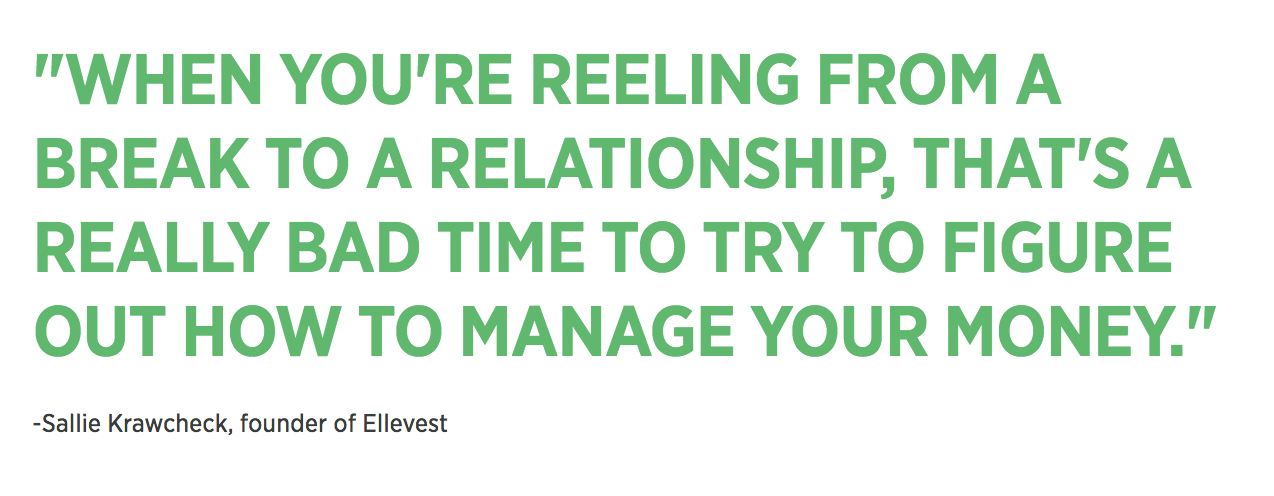“Too many people spend money they earned, to buy things they don’t want, to impress people that they don’t like.” ― Will Rogers
I talk a lot about the global investment markets here. I’m focused on making profits, and often I’m looking to make multiples, knowing full well that some opportunities won’t work out. I’ll get the timing wrong or I’ll miss something entirely and need to hedge, reposition, or exit entirely. That’s life.
But I haven’t spent much time on stating the obvious (because I figured it’s obvious) so in this post, I’m going just that.
Basics which purple-haired grandmothers everywhere would approve of as they make that second cup of tea from the same teabag. I am writing this because I receive emails from people of all ages looking for advice. From middle-aged guys and gals asking, “What do I do now to get secure?” Secure… not rich, just secure.
Why? Because they’ve been making the wrong decisions for at least two decades and they’re just now realizing time is running out and the current path of mediocrity isn’t likely to make them rich, let alone secure. That’s a big problem, which I’m not even going to try tackle here.
This article is for those women who haven’t yet been led down the rosy path of consumer-driven expectations. The goal here is to build net worth as fast as you possibly can.

So, what exactly is net worth? Is it the amount of accumulated wealth you own?
Nope, not really. That’s a terrible metric. Net worth should really be calculated as a number of years, not a dollar number. I call it the “the beach ratio”. Net worth is the number of years you can sit on the beach doing “sweet FA”. If you’re tracking your net worth, you can see the progress you’re making toward your financial goals. It can also serve as a warning if you’re not meeting goals so you can then adjust and adapt your financial plans as needed.
Speaking of goals, your goal should be to ensure you don’t end up like this:

The above data comes from this study done by the Economic Policy Institute. A couple of things to consider: the average American couple (that’s two working people!) has $5,000 saved for retirement (yes, really). Nearly 40% of the population has only $480 saved. Now, how many of that same 40% own a new smartphone? Just sayin’…
And that’s not all, the retirement savings crisis is not just a national crisis, it’s specifically a woman’s crisis. That’s according to Sallie Krawcheck, co-founder, and CEO of Ellevest, a digital investment a digital investing platform specifically geared towards women. According to Krawcheck, 46 percent of women in the workforce have a retirement plan. And even if you are a part of the 46 percent of women with a plan in place, that doesn’t mean you have enough saved.
More on why the retirement savings crisis is a women’s crisis—and what you can do in the video below.
VIDEO: Ellevest
Along with wage inequality, women retire with just two-thirds the money men have, all while living at least five years longer than men. “As women, we have a number of money gaps. We don’t invest as much as men do…we don’t make the money men do, we aren’t as advanced at work as men, things actually cost us more, [and] we have a gender debt gap,” Krawcheck told CNBC’s “On the Money” in an interview.
“We’re not going to be equal until we’re financially equal,” said Krawcheck, a Columbia Business School graduate, and a veteran of banking giants Bank of America and Citigroup. To help close the financial gap, Krawcheck realized women’s needs and goals needed to be addressed in a better way. It’s one she started Ellevest.
Keep reading for my top four financial lessons every woman needs to nail.
1. Set Yourself a Base FIXED Expense Ratio
Let’s get practical…
Let’s say you come out of college or high school and you’re earning $50k/year. For goodness sake don’t spend more than 10% of your income on accommodation. Now immediately I know I’m going to get a ton of emails saying… “Oh, but you don’t understand Chris…where I live you can’t get a decent apartment for 3x that.”
Look. You have to decide if you’re prepared to sell your future upfront for comfort now or not.
When you’re in your 20s you can (and absolutely should) flat-share with others to ensure that you don’t castrate yourself financially before you’ve even tried to procreate. I know of people spending 30% or more of their income on rent and doing it well into their 30s, 40s, and even 50s.
That, my friends, is catastrophic to wealth creation and is like dumping a bag of cement on your back and then trying to swim the English Channel. Good luck, you’re cementing your path to poverty. Real poverty, like in those 3rd world charity commercials you’ve seen, because for anyone that’s been reading capitalist exploits for some time they are fully aware there is a coming pension crisis and there ain’t nobody to bail you out but you.
The task is to fix your expenses as low as you possibly can and then work your tail off on expanding the right-hand side of the ledger.
As a rule of thumb, your expenses should never exceed 70% of your net income, though 50% is really the number. (more on that here.)
What does this mean?
When you’re in your 20s it means no $7 tequila shots to be had from the gyrating crotch of an intoxicating beauty and no lattes to follow the morning after to cure a hangover.
You won’t have the time. All your time should be focused on generating income streams. If you don’t like the concept then, by all means, join the rest of the crowd, enjoy yourself now and welcome a life of mediocrity. Nobody will fault you for it because it’s what everyone does. This is your choice. It’s black and white. You’re in your 20s—you have high energy levels, don’t need much sleep, have high-risk tolerance, and now is the time you actually should.
That said, one way to approach investing is to think about different life stages. According to Krawcheck, your 20s should be a time to do the following: pay down high-interest debt, build credit, build an emergency fund.
What’s an emergency fund?
This should be at least three months of take-home pay, in case you get fired (hey, it happens—more than any of us like to think), or in case you have to take time away from work for, you know, an emergency. That money should be held in cash, for safety. Ellevest is working to close the gender investing gap, so they don’t charge anything for those and you should have that set aside before you invest. Sign up right here.
And the next step is… begin to invest for retirement, and invest for other goals.
“When it comes to investing, pay yourself first. Put away a percentage of your after-tax salary every month. The breakdown should look something like this: 50% for needs, 30% for wants, 20% for investing,” says Krawcheck. It’s recommended that you do this after building an emergency fund—and not until you’ve paid off your high-interest debt.
What should you invest in?
Retirement: Get that 401(k) match (if your company has one) by investing part of each paycheck. A match is free money; don’t leave it on the table—do what is necessary and do it early. If you’re working as hard as you should be at this age you won’t have the time or energy to be spending any money anyway.
2. Increase Revenue
Let’s say that in year one your base salary was $50,000, you spent 70% on expenses ($35,000) and therefore by default saved $15,000.
For the purposes of this article let’s work on a 3% annual pay increase. You’ll be gaining experience, increasing your skill set and this is reasonable. It can easily be higher but let’s be conservative. Your base expenses remain and your net worth has gone from $15,000 in year one to $31,500 in year two ($15,000 x 2 years + 3% on $50,000).
Realise that in year two you’ve increased your net worth generated for that year by 10% and you’ve more than doubled your net worth because you’ve got your expenses fixed.
My readers are a sharp bunch so you’ll understand quite quickly that if you get more than 3% pay increase it all drops to the bottom line.
3. Rethinking Risk
As mentioned in point 1 above you should be taking risks. What sort of risks?
Risk your time on things that will educate you to be able to execute better. Develop skills that you can monetize.
If you’re in a job, which presumably you are or will be, you should be on a constant lookout for opportunities to try your hand at building business incomes. By the time you’ve been at your job for 3 years if you’ve not got at least one side business operating outside of your job, you’re doing it wrong.
But how much risk is the right amount of these longer-term goals?
Take on too little risk (such as with an Emergency Fund), and your money doesn’t grow. Take on too much risk and you may earn a higher return over time, but you can also experience more significant market ups and downs. And, you might end up needing your money at an inopportune time in the markets.
Hmmm.
According to Krawcheck, based on the hundreds of hours of research they did with women like you, targeting that 70% probability gives you (and them) enough confidence that we can all sleep at night, but gives you the opportunity to grow your money in a way that is simply not possible at 100% probability.
And at Ellevest, they don’t just set your “risk budget” and go the beach: they make sure that the 70% probability stays at 70%. Because things happen: markets go up, markets come down, you may not make a monthly deposit, time passes. Accordingly, they employ their proprietary technology to monitor your investment portfolio on a daily basis—to keep it at that 70%, and they adjust it as time passes (and your investing time horizon shortens) into lower-risk portfolios. Ellevest believes that investing this way increases the chances of your reaching your goals, substantially, as you move from dreaming about something to articulating your goal, to investing towards it.
After you figure out what you need to do to achieve your goals, figure out how to automate it. You can set up a recurring contribution on Ellevest and change it at any time. There’s no commitment. By and large, financial advisors charge fees of about 1% to 2% of your assets. In the case of Ellevest, however, the fees are just 0.5%. (Ellevest can charge low fees because it uses a lot of low-cost exchange-traded funds.)

4. Add Additional Revenue Streams and Buy “Long Dated Options”
Your income is going to be rising because you’ll be working your little tail off in your job, and additional gigs which bring income.
Let me say one thing about taking additional gigs to earn more income. Focus on things which increase your skill sets. (some examples) Pumping gas won’t do that, waiting tables won’t do that. Instead, pick industries that are evolving where opportunities will open up… if only due to fewer entrants knowing they exist. Robotics, programming, anything that can’t be automated away because automated away it will be. It’s only a matter of time.
If you ever attend those bars and clubs your peers are going to on weekends it should be to learn and work in the clubs. If you get lucky on the side all the better but you’re not focussed on that. Learn the mechanics of the business. When is the club owner looking for that $250k expansion capital to set up a new club across town guess who’ll have the investment capital to take an equity ownership, and have a deeper understanding of the business?
Buy long-dated options. What do I mean by this? Let me use an example: In the early and mid 2,000s, I had some friends who were earning great money doing web development. Some were taking additional courses to better their skill sets but there were no barriers to entry. None. Ok, there was the MCSP (Microsoft Certified Systems Programmer). Remember that?
One friend saw the writing on the wall for his job and continued to work in his job but instead of “up-skilling” with various programs sold, used his spare time to moonlight at a firm building CMS systems. The skills he picked up there helped him snatch a job which included an options package at a Danish software development company which went onto developing a CMS system for packaging firms and after just 7 years and a buyout from a private equity firm he walked away with about 14 million euros.

What You’ll Get: When you internalize what I’ve just said and really get it. You’ll see a marked change in your net worth in just 2 short years and you’ll realize that every single dollar you SPEND is arsenic to your net worth (beach years). Stick with it and you’ll get income acceleration as you have increased not just income but most importantly net worth.
This is pretty much guaranteed if you stick to it. By the time you’re clocking in at 30 years, you’ll be wealthier than most highly paid investment bankers (trust me on this) based on how many years you can survive (remember: the beach ratio).
Remember, it doesn’t matter if you’re earning $100,000 a year or $1 million a year. What matters is how much you’re spending relative to your income which provides you with your “beach ratio”.
Your living standard can increase but NOT at the expense of your “beach ratio.” Preferably this is always accelerating meaning you can outlive your money at which point a rise in your living standard won’t affect your security.
Ready to invest? Ellevest has no minimum so you can start investing with as little, or as much as you like.
Adapted from Capitalist Exploits, by Chris MacIntosh, fund manager, and adviser. See the original story here.











